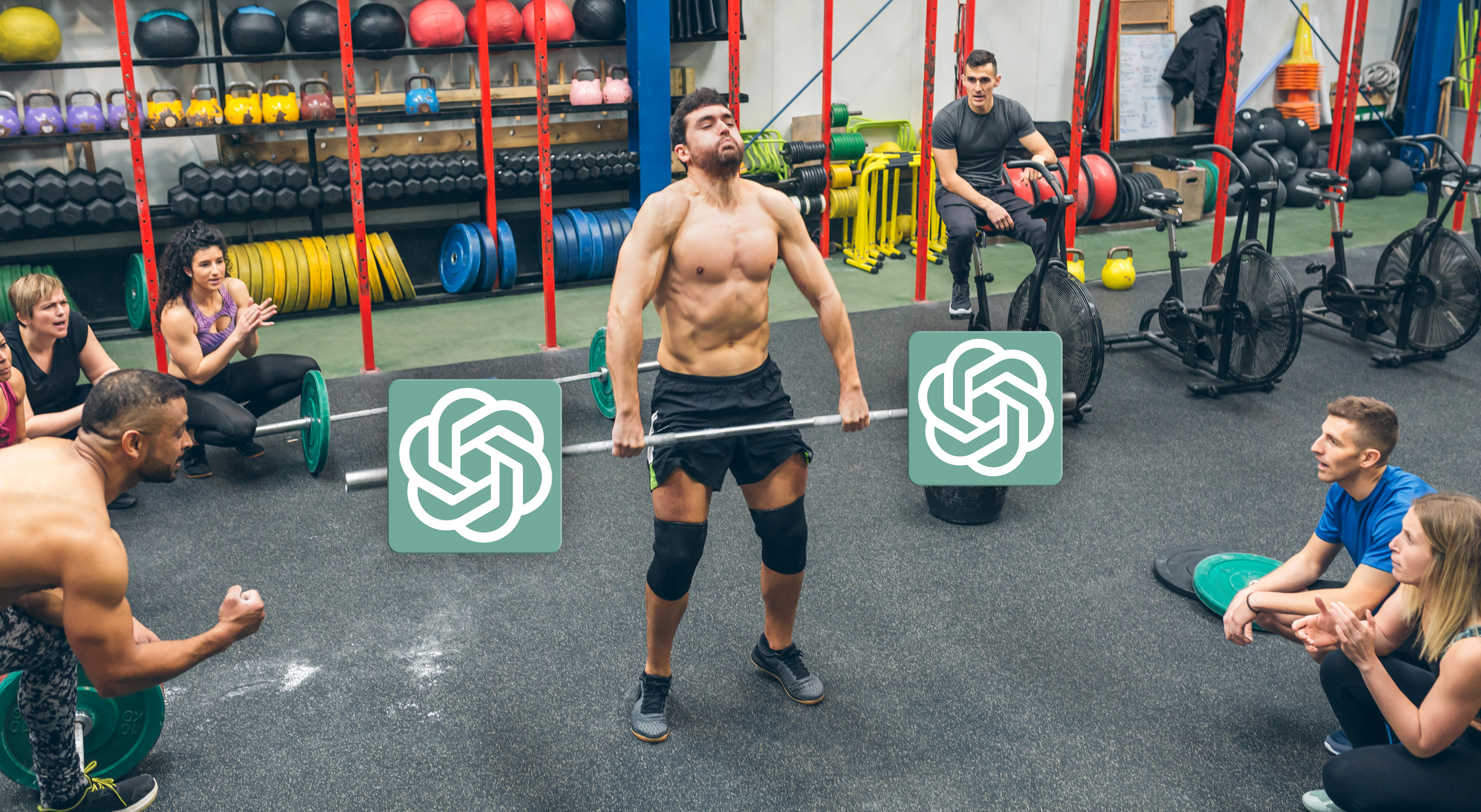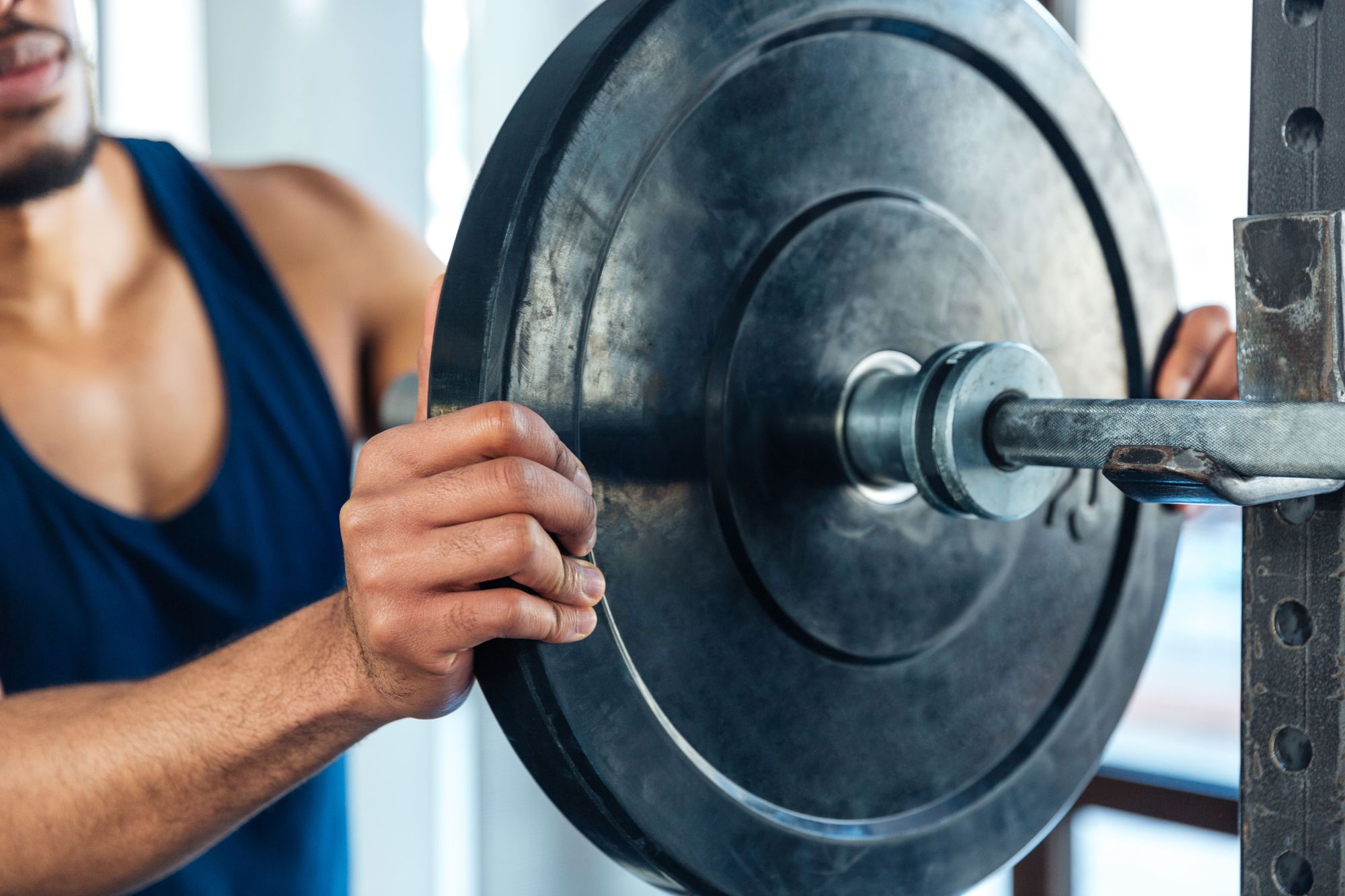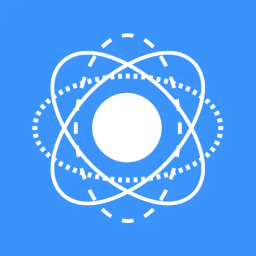Using ChatGPT as a Workout Planner Is a Terrible Idea — Here’s Why
Everyone is using ChatGPT for ... well, almost everything. Which begs the question: Is there any value in using ChatGPT as a workout planner?

Right now, it seems like everyone everywhere is obsessed with ChatGPT.
And it’s not difficult to see why. From generating ideas to correcting a bug in code to formulating complex Excel formulas, this AI (artificial intelligence) chatbot handles them all like a champ 👑, potentially shaving off precious hours spent on mundane tasks.
That said, there are still many things ChatGPT cannot do or doesn't do very well.
It’s also frequently known to “hallucinate” information (such a nice way of putting it, honestly) — leading to unreliable or misleading responses.
So, given this, it’s only natural to wonder … can we use ChatGPT as a workout planner?
Well, the title of this article probably gave the answer away, but it's not just a simple "no". There's more to meet the eye; continue reading to learn more.
What is ChatGPT? How does it work?
ChatGPT is a natural language processing tool driven by AI technology.
To understand why you can interact with ChatGPT in an interactive way (e.g., get it to answer your questions), it’ll help if you know how it was “made”.
Without diving too much into specifics, ChatGPT is built on what’s called a Large Language Model (LLM), a type of machine learning model that’s typically:
- Trained with immense amounts of data, and
- Use self-supervised learning to predict the next word (technical term: token) in a sentence, given the surrounding context
The training process is repeated until the model reaches an acceptable level of accuracy.
ChatGPT was trained on all sorts of web content — including websites, books, social media, news articles, and more — with a mix of supervised learning and Reinforcement Learning from Human Feedback (RLHF).
Here’s why you shouldn’t use ChatGPT as a workout planner
So, here’s the deal.
Because ChatGPT was trained on existing information, it is incapable of critical or original thinking. Instead, it simply regurgitates and (possibly) remixes what it was fed.
But why is this characteristic bad news if you wish to use ChatGPT as a workout planner? (No, just to be clear, it's not because it'll turn into something like Skynet and physically force you to complete your workouts.)
#1: It cannot give personalized recommendations
At first glance, ChatGPT can put together a relatively decent workout plan.
Pretend you are a certified personal trainer. Can you come up with a thrice-weekly gym workout routine that helps me grow all my muscle groups equally?
Day 1: Upper Body Push
Warm-up: 5-10 minutes of cardio (treadmill, stationary bike, or elliptical)
Barbell Bench Press: 3 sets of 8-10 reps
Dumbbell Overhead Press: 3 sets of 8-10 reps
Incline Dumbbell Bench Press: 3 sets of 8-10 reps
Cable Tricep Pushdown: 3 sets of 10-12 reps
Dumbbell Lateral Raise: 3 sets of 10-12 reps
Cool-down: 5-10 minutes of stretching
Day 2: Lower Body
Warm-up: 5-10 minutes of cardio (treadmill, stationary bike, or elliptical)
Barbell Squats: 3 sets of 8-10 reps
Leg Press: 3 sets of 10-12 reps
Romanian Deadlifts: 3 sets of 10-12 reps
Leg Curls: 3 sets of 10-12 reps
Calf Raises: 3 sets of 12-15 reps
Cool-down: 5-10 minutes of stretching
Day 3: Upper Body Pull
Warm-up: 5-10 minutes of cardio (treadmill, stationary bike, or elliptical)
Lat Pulldowns: 3 sets of 10-12 reps
Barbell Rows: 3 sets of 8-10 reps
Dumbbell Bicep Curls: 3 sets of 10-12 reps
Cable Rows: 3 sets of 10-12 reps
Reverse Flyes: 3 sets of 10-12 reps
Cool-down: 5-10 minutes of stretching
But it’s also incredibly generic. (Though I did think including the warm-up was a nice touch.)
It seems like a workout plan you could get quite literally anywhere (and when you think about how ChatGPT works, you probably could).
What happens if you can’t or don’t want to perform the barbell bench press? Or any other exercise it has listed, for that matter?
Yes, of course, you could prompt it again … and that brings us to the next issue with using ChatGPT as a workout planner.
#2: It needs a lot of prompting
You could get ChatGPT to give a more personalized routine by feeding it prompts like, “Give me alternative exercises I could do for the reverse flyes/[insert your choice of exercises]”.
But it’s time-consuming.
Also, you'd need at least some sense of what you’re looking for. For example, even though I told it to act as a certified personal trainer, it still didn't give me any information on when and how I could progressively overload my exercises.

To its credit, though, ChatGPT gave the following answer when I asked, "When should I progressively overload on these exercises?"
Progressive overload is a key principle in strength training, and it involves gradually increasing the weight, reps, or sets of an exercise over time to continually challenge your muscles and stimulate growth.
Here are some tips on when to progressively overload on the exercises in your workout routine:
1. Start with a weight that allows you to perform 8-10 reps with good form. As you get stronger, gradually increase the weight to continue challenging your muscles.
2. Once you can perform 10-12 reps with good form, increase the weight for the next workout. It's important to only increase the weight by a small amount, such as 5-10%, to avoid injury and maintain proper form.
3. Alternatively, you can progressively overload by increasing the number of sets or reps. For example, if you typically perform 3 sets of 8-10 reps, you could increase to 3 sets of 12 reps or add a fourth set to your workout.
4. It's important to note that you shouldn't aim to overload every workout, as your muscles need time to recover and adapt to the stress. Instead, aim to increase the weight, sets, or reps every 2-4 weeks, depending on your fitness level and goals.
Overall, progressive overload is essential for building strength and muscle mass. By gradually increasing the weight, reps, or sets of your exercises over time, you can continue to challenge your muscles and make progress toward your fitness goals.
Looks good at first glance.
But dive deeper, and you’ll see that the answer didn’t quite capture the nuances of muscle growth and progressive overload:
- Progressive overloading isn’t just about increasing the weight, sets, and reps.
- You don’t need to strictly stick with 8 to 10 reps for optimal growth.
- Depending on your exercise choice and lifting experience, an increase of 5 to 10% in weight may not always be suitable.
- Etc.
#3: It doesn’t have access to the latest research
Currently, ChatGPT only has access to information up to 2021 (although that might change soon).
That means its training programming recommendations — from exercise selection to training frequency to general strength training “best practices” — could be outdated.
For example, I asked ChatGPT, "Is full range of training always better than partial range of training for muscle growth?"
I won’t copy-paste its entire answer here, but here’s a snippet of what it said:
However, if your goal is to increase overall muscle size and improve joint mobility, full ROM training may be more beneficial. By performing exercises through the entire range of motion, you can stimulate muscle growth and improve joint flexibility and mobility.
Sounds super confident … but recent research (we’re talking 2023) shows that lengthened partials may actually result in better hypertrophy than full ROM training.
Does ChatGPT know that? No. 💅 (But it might now, because *ahem* it was politely corrected.)
GymStreak: the better AI-powered workout planner
OK, so the bottom line: don't use ChatGPT as a workout planner.
It can generate a free workout plan, sure, but it does pretty much the same thing as any first-page results on Google can: throw up a vanilla, generic training plan.
What if you’re looking for something more? An intelligent workout planner that’ll actually:
- Take your training preferences and goals into account (without excessive and exhaustive prompting)?
- Tell you when to progressive overload — once again, on its own accord?
- Help you track your workout sessions so you stay motivated?
Just so you know, it exists.
And it’s none other than one of the best health and fitness apps around: GymStreak. Like ChatGPT, it’s AI-powered. But unlike ChatGPT, it isn’t a Large Language Model. That means it doesn’t just regurgitate known information.
See it in action below:
Workout Programming + Nutrition Tracking, Off Your Hands
*sigh of relief* We'll guide you through it all — step-by-step. Just download the app, and you'll be making progress toward your dream body like never before.
References
Introducing ChatGPT. (n.d.). Retrieved May 3, 2023, from https://openai.com/blog/chatgpt
Wiggers, K. (2022, April 28). The emerging types of language models and why they matter. TechCrunch. https://techcrunch.com/2022/04/28/the-emerging-types-of-language-models-and-why-they-matter/
Wolf, M., Androulakis-Korakakis, P., Fisher, J., Schoenfeld, B., & Steele, J. (2023). Partial Vs Full Range of Motion Resistance Training: A Systematic Review and Meta-Analysis. International Journal of Strength and Conditioning, 3(1), Article 1. https://doi.org/10.47206/ijsc.v3i1.182


